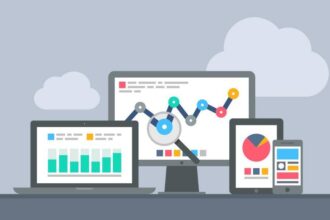Part of my job has always dealt with looking into the future and trying to discern important trends that may impact our business. I think I see the next big thing on the way – folks are talking about it now, but I’m not sure enough people in digital roles are thinking about the implications – for themselves, their employees, and their customers.
Brute Force
Part of my job has always dealt with looking into the future and trying to discern important trends that may impact our business. I think I see the next big thing on the way – folks are talking about it now, but I’m not sure enough people in digital roles are thinking about the implications – for themselves, their employees, and their customers.
Brute Force
Remember the first computer chess games? Running on machines that were amazingly tiny (in retrospect), they could give a high-school kid of middling skill a reasonably good match. Back then, I remember reading how the programmer was able to squeeze so much brilliance into such a small space, including the concept of an opening book – a collection of pre-programmed moves and responses that, when followed, reduced the broad set of options – which increased the computation time available to evaluate and select the computer’s next move. I also read hints on how to beat these programs – by making an unorthodox opening move that throws the computer off a little, forcing it to do more “math” in the allotted time, reducing the depth to which it could look ahead at other possible moves. Nowadays, it’s less likely that this tactic will help – computers are much faster, and brute-force computation for deeper looks into millions (billions!) of future possibilities has pushed aside clever algorithms.
What about password cracking? In the past, brilliant minds were developing complicated machines to suss out the underlying patterns; nowadays, hackers just throw massive processor firepower against the wall, trying every possible key combination until it finds the right one.
Remember the RISC architecture for microprocessors? Reduced Instruction Set Computing delivered a simplistic set of opcodes, but blindingly fast processor speeds – who needs to think about less bytes of code, just keep the logic and structure simple and blow them away with raw speed. Brute force has always been a reasonable option.
Big Data and the Internet of Things
Last year’s buzzword king-of-the-hill “Big Data”, and this year’s new champion “Internet of Things”, share a very important central theme – lots of data. To be sure, Big Data is just as much about unstructured data than it is about sheer volume, and the Internet of Things is enabled by the exciting sensor technology that happens to be generating all that data. But compute-and-storage vendors have jumped on both of these bandwagons, happy to sell cloud, hardware, software, and security to manage all those terabytes. Strictly speaking, they are correct – lots of data is and will continue to be generated, and Problem Number One is where to stash it and how to manage it.
Ah, but that quickly gets us to Problem Number Two – how do we swim through this safely stored, nicely managed ocean of data to find the facts, patterns, and indicators that will translate into value for customers, employees, and shareholders?
The Intersection of Brute Force and Lots of Data – Machine Learning
The real challenge that lies in front of us – how do we expect to handle the overflow of data that is headed our way? Why are we so excited at the prospect of a tidal wave of sensor and social data when we’ve spent much of the last 10 years complaining about information overload in the Internet era. The inconsistency is humorous, but there it is – what can we possibly do with all this data?
Enter Machine Learning – a reasonably specific term that I am genericizing to refer to the state-of-the-art in that old windmill, Artificial Intelligence. Kevin Kelly wrote up a nice how we got to now story about AI in Wired, where he calls out three significant breakthroughs in the last year or so that have enabled fast forward progress in this area – Big Data (as in Lots Of Data), Better Algorithms (it’s not just brute force …), and Cheap, Massively Parallel (… but it’s a lot of brute force). And to me, the tech that stitches this all together is that middle bit – a class of “better algorithms” that have everything to do with searching for patterns and drawing inferences versus looking for explicit rules to guide the way.
Why it’s Important for My Business (and Yours)
I won’t try to explain Machine Learning here (but check out this vision-oriented article by Jorge Garcia, or this tech-oriented one from Pete Warden). However, I can bullet out a few ideas where machine learning can transform …
… a process: When a customer call comes in to your call center, wouldn’t it be great if the call was automatically routed to the person that is best suited to answer the call – and is currently available? Mattersight Corporation is using machine learning to evaluate personality, communication style, behavioral characteristics, and previous interaction history to get the call routed quickly, to someone who can help.
… a market: Amazon is developing predictive algorithms to schedule shipment for a product before you’ve even ordered it. Sounds kind of spooky, but they are looking for patterns in data like prior orders, product searches, wish lists, shopping cart contents, even cursor activity.
… an industry: Siemens is using machine learning in heavy industry, developing methods for optimizing industrial facilities such as steel mills and gas turbines. Even newer industries like power generating wind turbines can be impacted
What Next?
Don’t get me wrong – I think this stuff is still sufficiently advanced to be a bit out of reach for most SMBs. However, if you have an organizational skunk works, one or two high-energy resources with a wee bit of spare time, or are looking for a little side action during the coming winter months, there are plenty of resources out there to get started. Me? Next thing to look at will be Microsoft’s Azure announcements, including their new Azure ML service. Paint is clearly still wet, but there is something possibly of interest here.
Minimally, get this topic on your radar screen; it’s coming closer to the mainstream every day.









-330x220.jpg)